Brazil is a beautiful country, packed with a vibrant culture, warm weather, and stunning flowers. Want to learn more about Brazilian flowers so that you can plant and nurture some for yourself?
If so, you’re in the right place! We believe that learning about these beautiful plants will help you on your gardening journey.
There are seeds, bulbs, shrubs, trees, and houseplants native to Brazil, giving you choices aplenty. But, with all these options, how will you choose which plants from this vibrant country suit you? Picking the wrong one can mean that you ruin your garden, causing you to give up your landscaping dreams.
To stop you from digging yourself into this hole, we’ve gathered together information from the deepest corners of the internet. The following article contains what we’ve learned so that you can educate yourself on these gorgeous plants too. So, to find out about Brazilian flowers, read on!
1. Cattleya Labiata
The Cattleya labiata is so Brazilian that it’s the country’s national flower and thrives in tropical conditions. If you don’t live in a naturally warm climate, we recommend placing this plant indoors so long as the temperature reaches between 65 and 70 degrees Fahrenheit when the sun’s up.
2. Laelias
This is an orchid that thrives when it’s placed in moss or bark and watered once every two weeks. Laelias have a reputation for coming in many different colors, which means it’s perfect for suiting many different interior design schemes, too!
3. Begonia

The begonia is a popular perennial, seen in many different homes as it’s super easy to care for, requiring a little watering and surviving in shaded spots.
However, suppose you live in a colder place and want to bring some Brazilian natural beauty into your life. In that case, we recommend getting a begonia as they don’t need lots of sunlight.
4. Poppy-Papaver Rhoeas
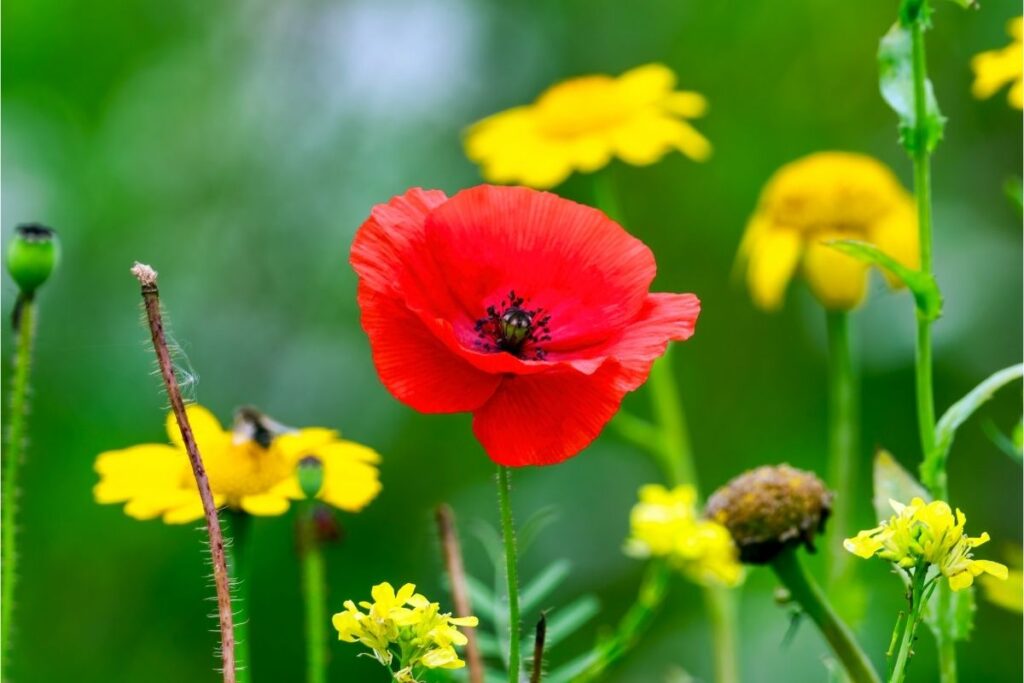
Known for being super hardy meadow plants, the Poppy-Papaver Rhoeas are vibrant, making them fabulous additions to any flower arrangement. These are prevalent plants in Brazil, often collected in groups throughout the country.
5. Quesnelia Testudo
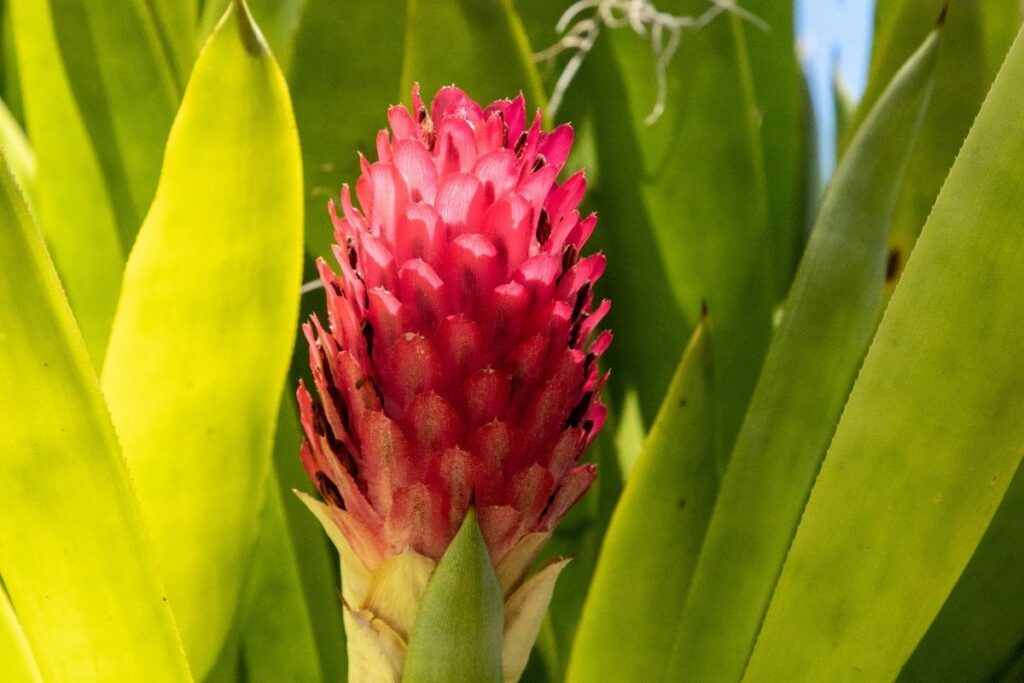
The Quesnel Testudo has 20 subspecies, which produce funky scaled details on their blossoms and are often purple or red. However, the leaves are bold green, which can withstand challenging conditions so plant this species in a spot you typically forget to look after!
6. Princess Flower (Tobouchina Semidecantra)
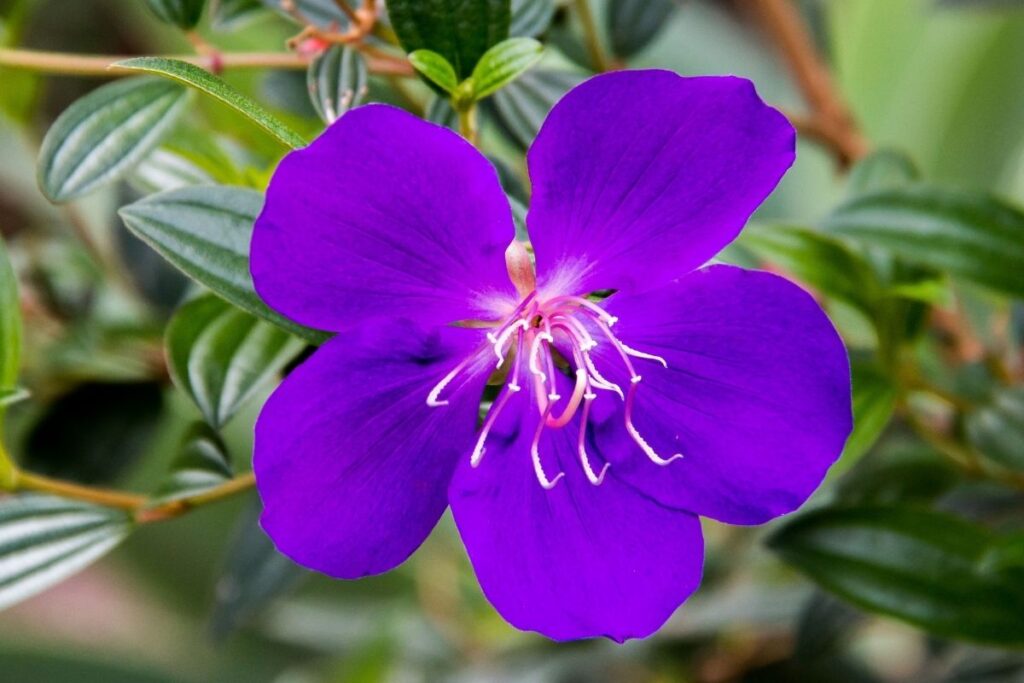
The Princess Flower (Tobouchina Semidecantra) is a hardy shrub that can grow to 3 meters tall when placed in acidic soil. To care for this flower, we recommend you water it often. However, make sure you exercise caution as this species is prone to getting the dreaded root rot.
7. Lady Ackland’s Cattleya (Cattleya Aclandiae)
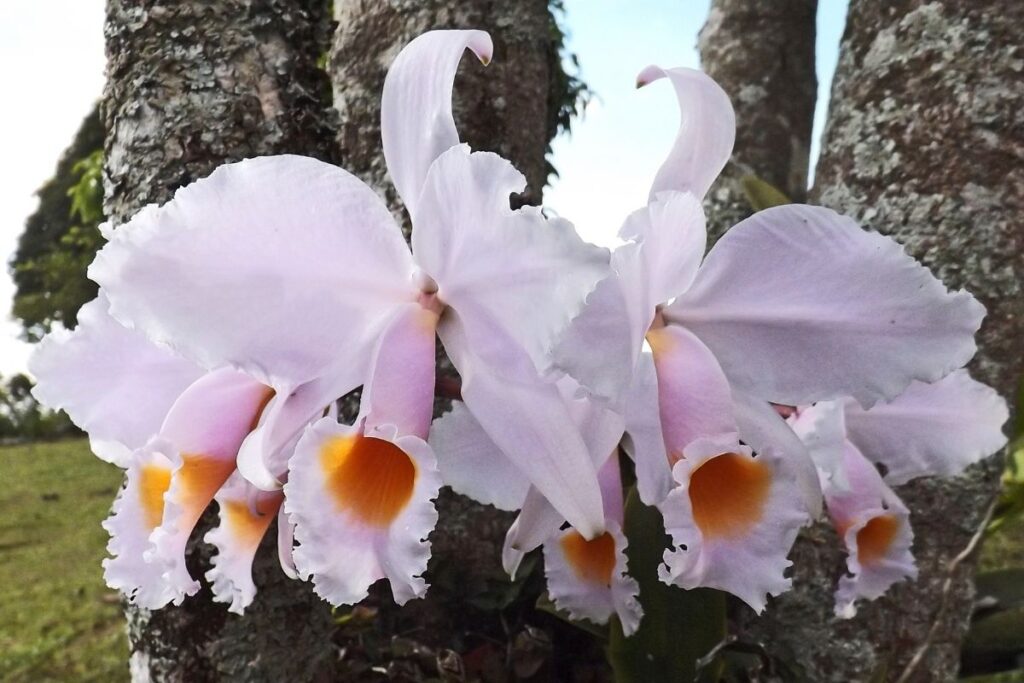
The Lady Ackland’s Cattleya (Cattleya Aclandiae) is a relatively small species, producing waxy blossoms with thick black and red foliage. To nurture this properly, we advise that you give it plenty of water and cut back on this moisture during winter to help prevent it from getting root rot.
8. Brazilwood (Paubrasilia Echinacea)
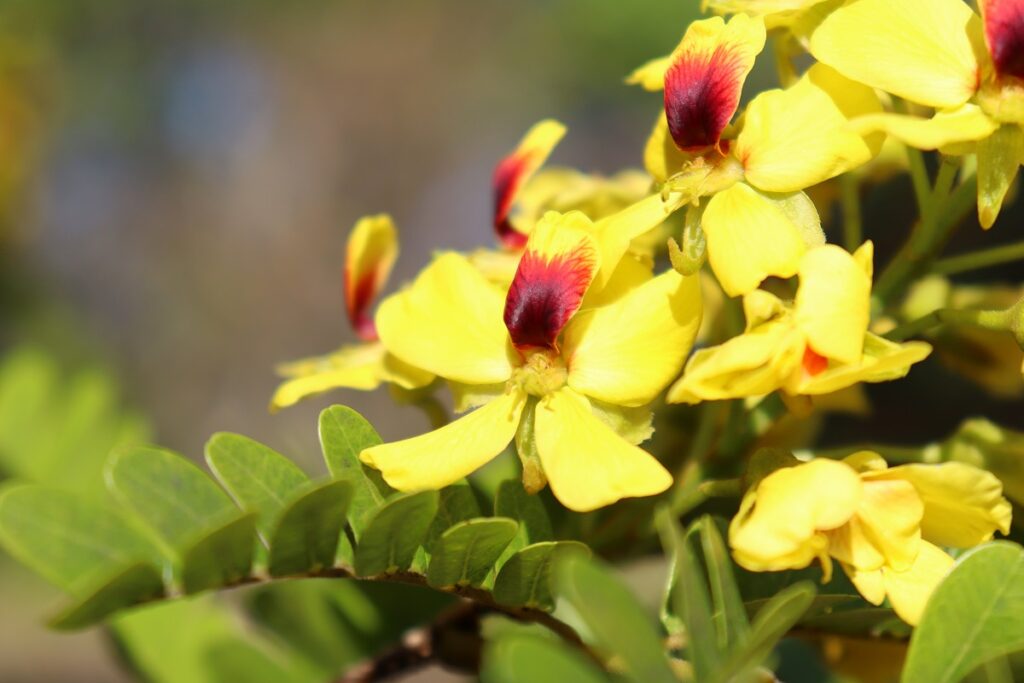
The Brazilwood (Paubrasilia Echinacea) is a tree, which can reach 11 meters tall by growing slowly in tricky conditions. Producing green-yellow flowers, which last for between 10 to 15 days, this plant is sure to give you some shade when you nurture it.
9. Mangabaeira (Hancornia Speciosa)
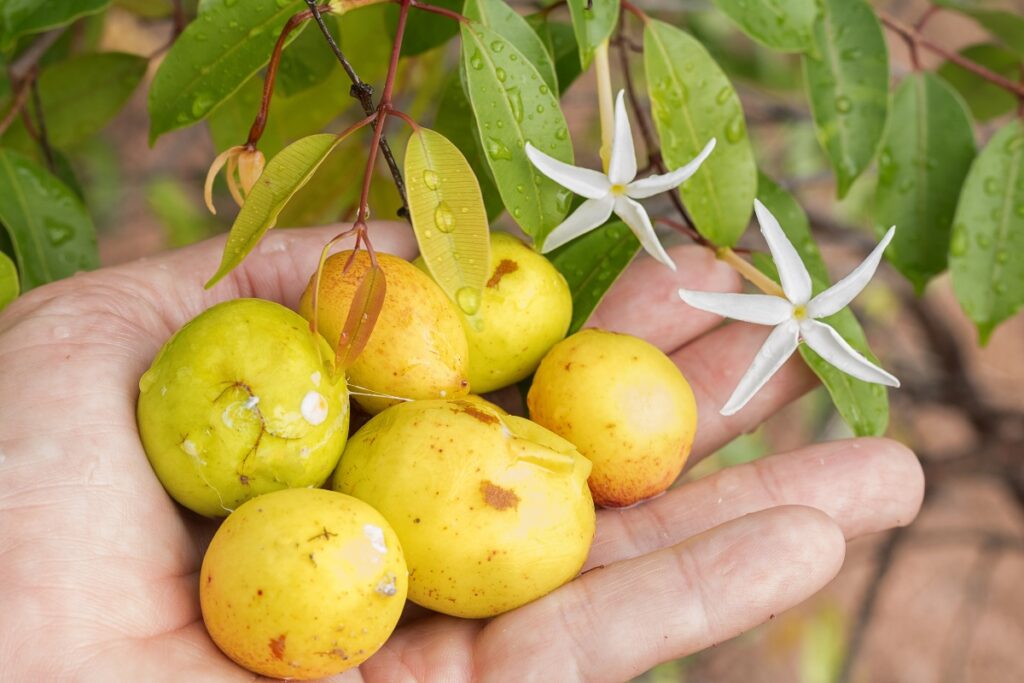
The Mangabaeira (Hancornia Speciosa) is a little tree known for producing beautifully scented flowers, which are yellow with red lines on them. To care for this Brazilian species, we recommend you put it in well-drained earth, prune it, and check for signs of Anthracnose disease often.
10. Tropical Water Lily

The Tropical water Lily produces bright pink flowers, which stick above any pond line and bring color to a dull water feature. If you buy this plant, you could see it grow beyond 2 meters wide and gaze at the delicately floating, flat dark green leaves.
11. Brugmansia Suaveolens ‘Pink Delight.’
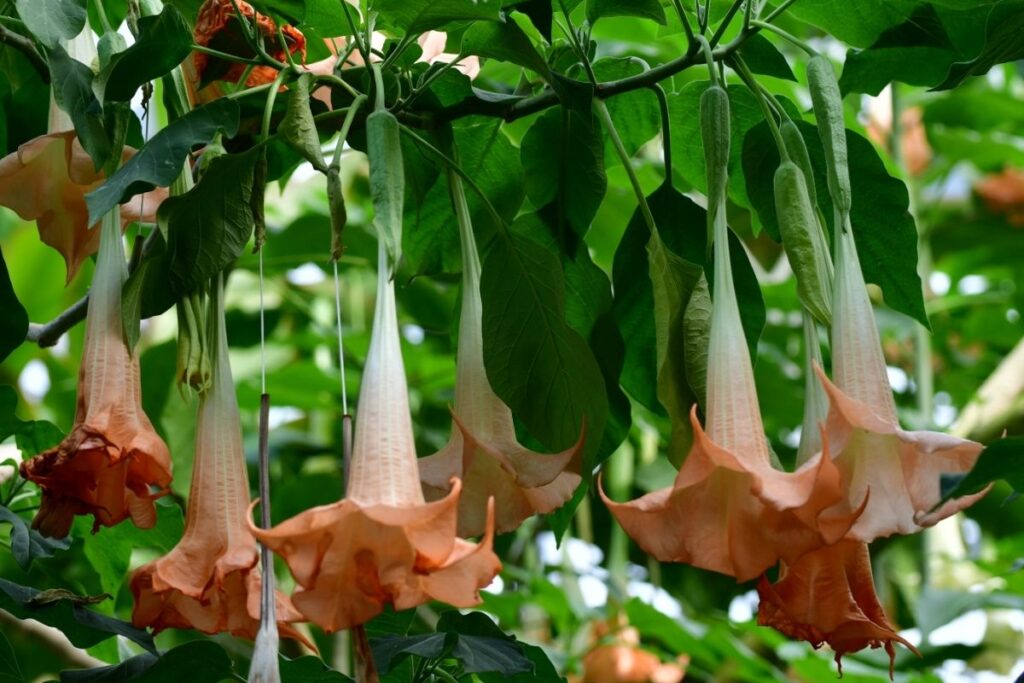
The Brugmansia suaveolens ‘Pink Delight’ has trumpeting light pink blooms, which are spectacular and smell particularly lovely. An extra benefit to this plant is you could grow it in a cold climate so long as you don’t have any frosts.
12. Passionflower (Passiflora Edulis)
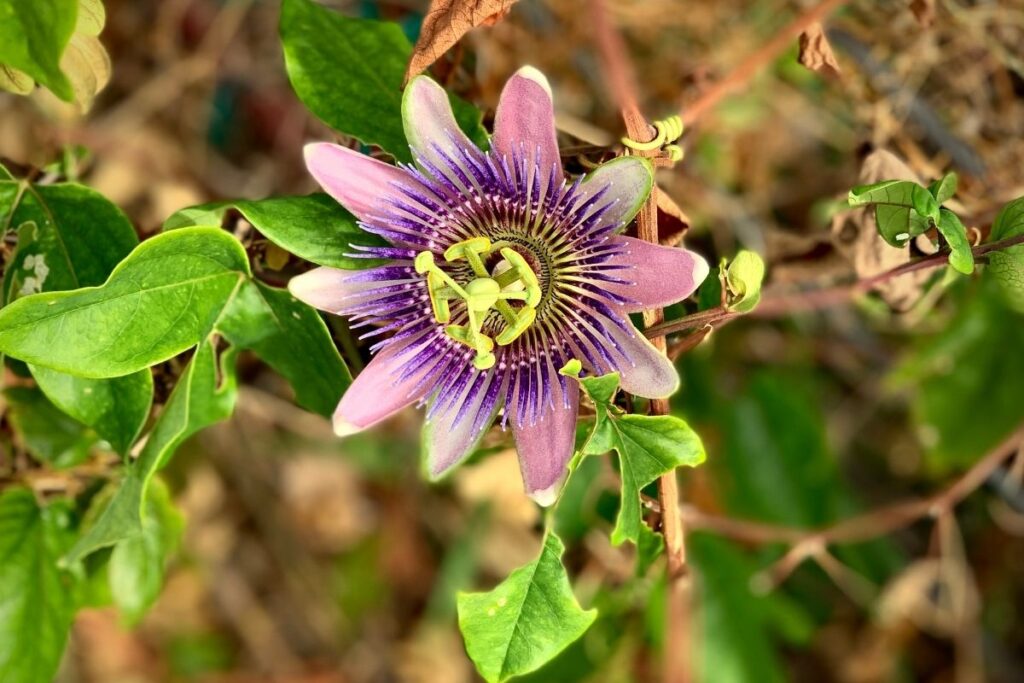
Are you searching for a species that also produces a super delicious fruit, which gives anyone who consumes it vitamins aplenty? The Passionflower (Passiflora edulis) is native to the Amazon rainforest. It has eye-catching purple and white flowers, similar to orchids.
13. Coffee Plant (Coffea Arabica)

The Coffee Plant (Coffea arabica) can grow to 30 feet high, lapping up the tropical rainforest conditions, which means that it’s ideal for adding height to any landscape.
The blossoms are red, yellow, and orange. They’re super vibrant additions to the plant that produces the globally loved coffee bean.
14. Kapok Tree (Ceiba Pentandra)
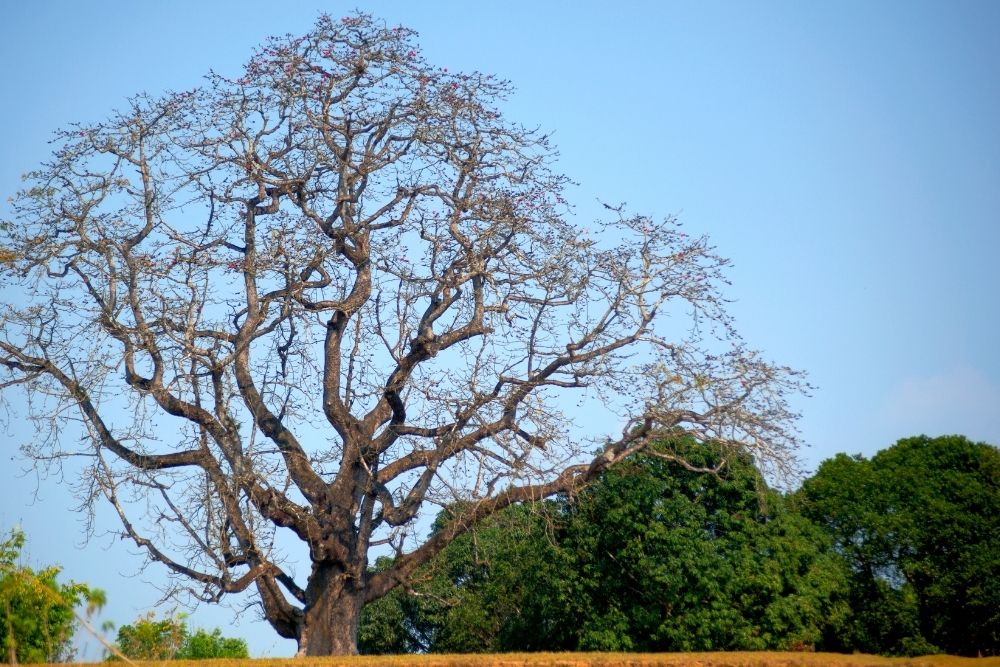
The Kapok Tree (Ceiba pentandra) is a towering species with yellow flowers pollinated by many jungle species. This tree is home to many tropical plants. If you live in a Brazilian environment, it is ideal for you to enjoy tending to these vibrant blossoms in your own space.
15. Orchid (Orchidaceae)
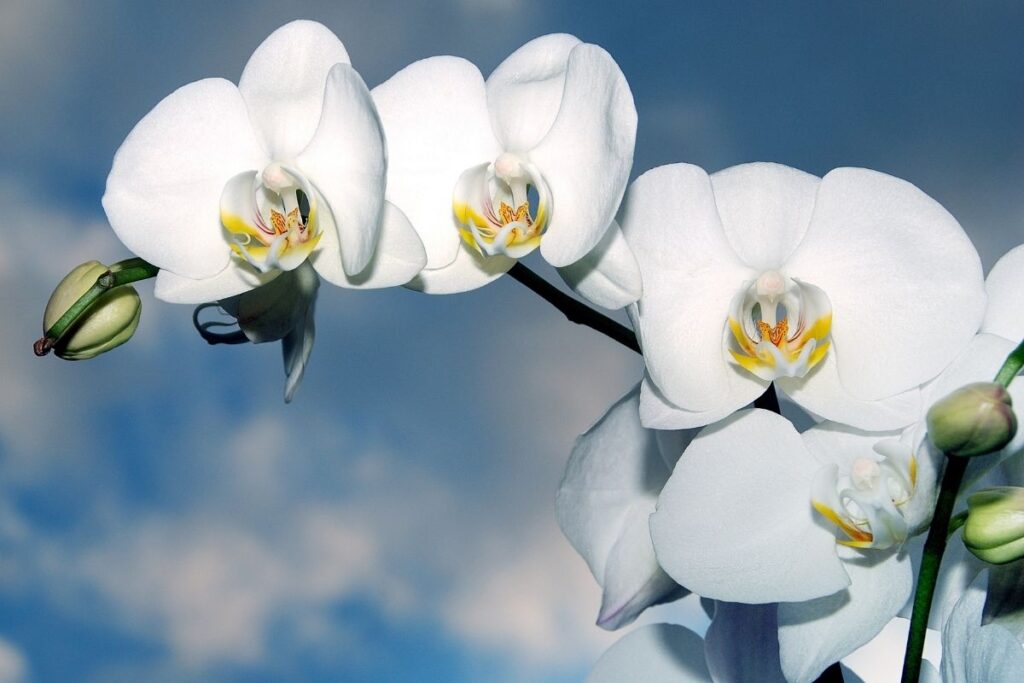
The Orchid (Orchidaceae) is a popular houseplant coming in many colorful subspecies, which means you can match it to your wall colors in your home. In addition, this flower is a popular talking point in any home, which means that it will probably bring joy to more people than you if you look after it.
Related: A Natureza é Bela! 23 Different Types Of Brazilian Trees
16. Heliconia (Heliconia Latispatha)
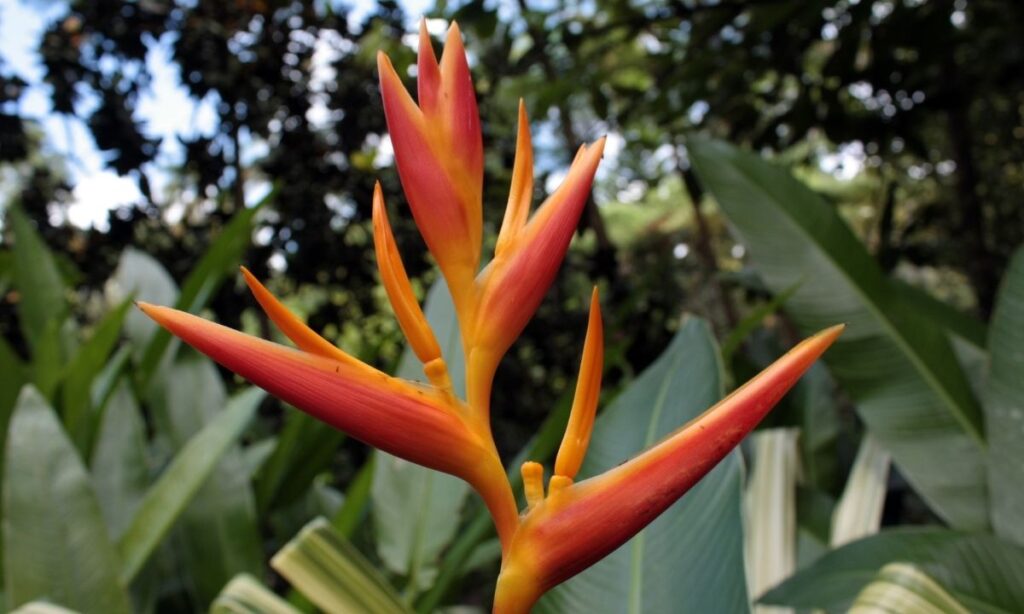
The Heliconia (Heliconia latispatha) has claw-shaped lobster flowers, which are super common and have red-colored petals. If you live in a tropical place with hummingbirds, we recommend nurturing this plant as the little creatures love it.
17. Bromeliad
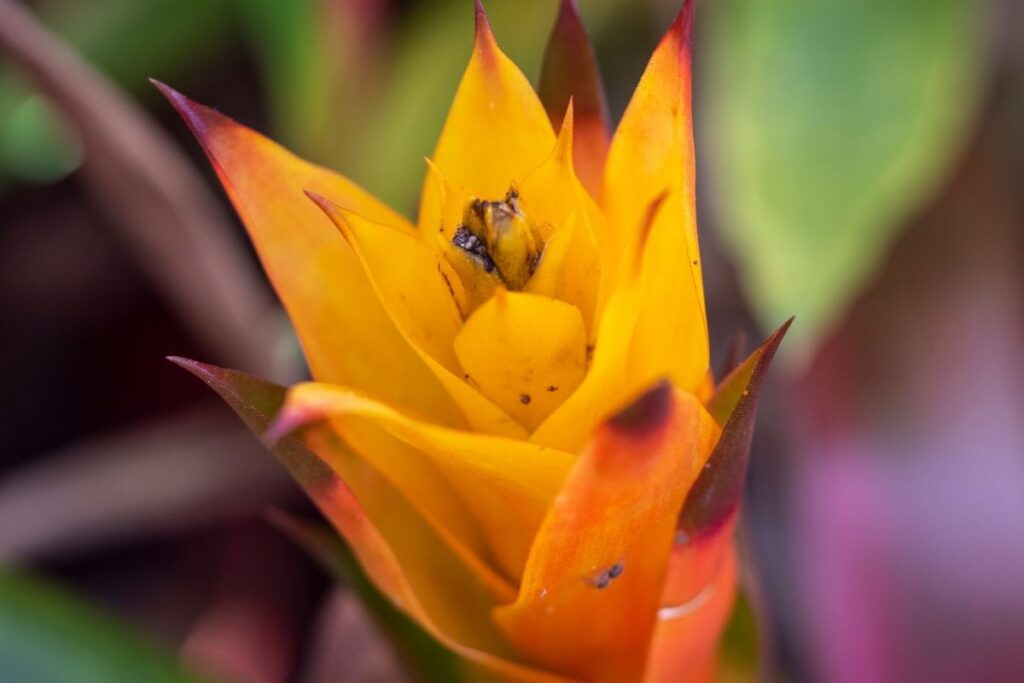
The Bromeliad is super popular with color-lovers as it has orange flowers with light and dark green striped foliage. In addition, the species have a water tank structure in their bases to look after themselves, which means that they can keep enough moisture to survive during a drought.
18. Poinsettia (Euphorbia Pulcherrima)
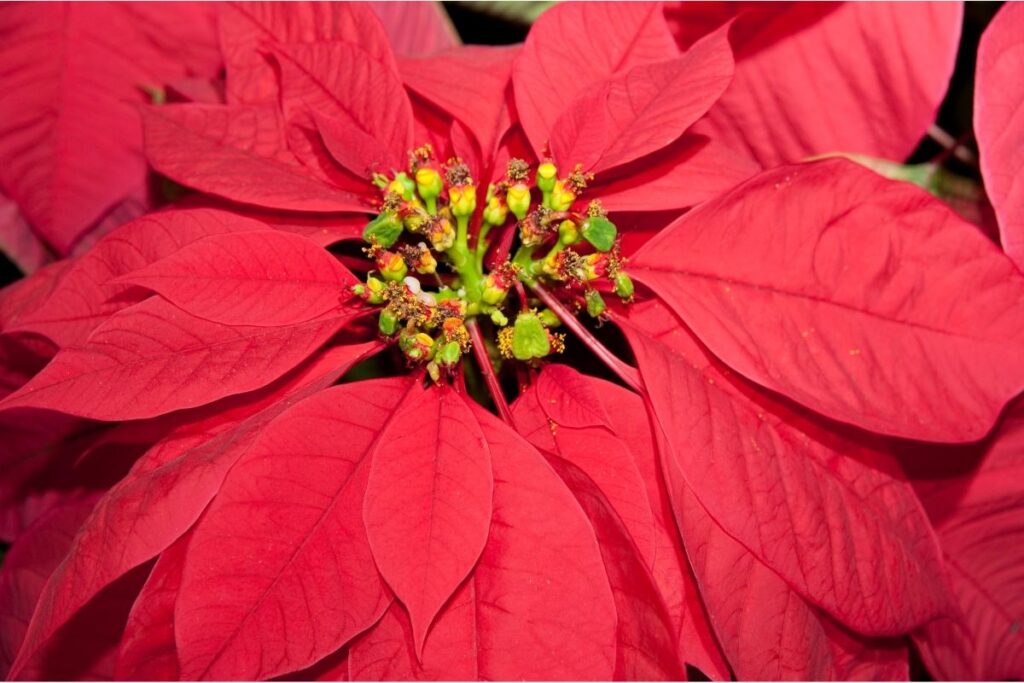
If you’re looking for a plant with vibrant flowers and foliage, we recommend purchasing the Poinsettia (Euphorbia pulcherrima) as it has red leaves. In addition, these plants are super attractive to pollinators, which love the yellow stalks in between the warm-colored foliage.
19. Monkey Brush Vine (Combretum Rotundifolium)

The Monkey Brush Vine (Combretum rotundifolium) is an exotic rainforest plant that winds its way around more giant trees and produces red blooms. And, there are yellow flowers that this plant has, too, giving it fluffy parts that are super striking.
20. Rubber Tree (Hevea Brasiliensis)
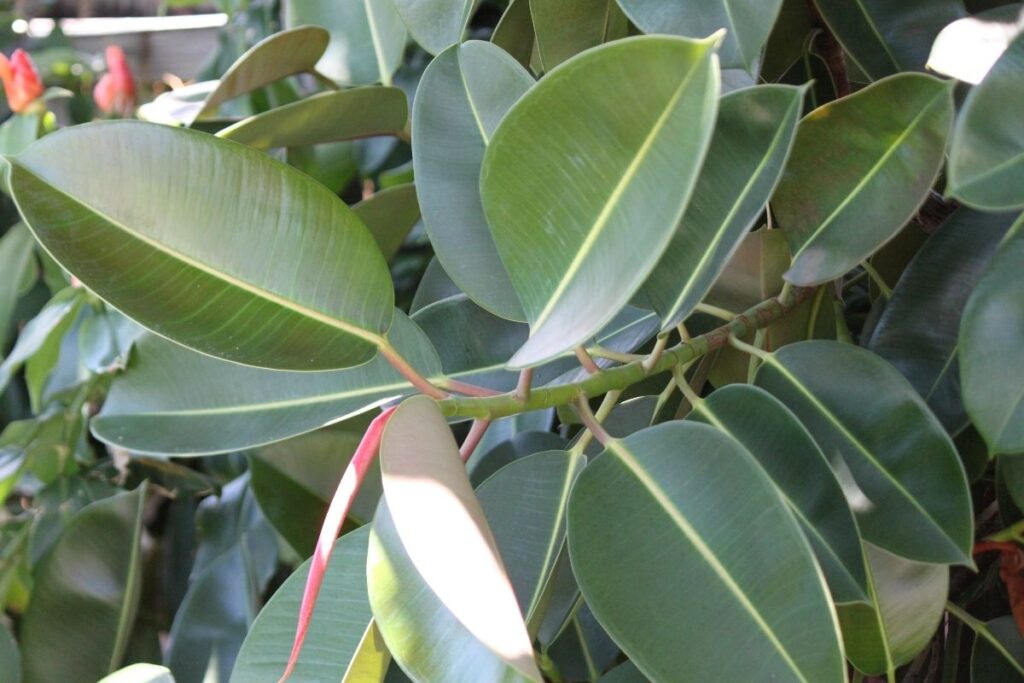
A crucial species to the indigenous peoples, the Rubber Tree (Hevea brasiliensis) produces latex and uses many modern mechanisms. In addition, this tall growing tree can make white, yellow, and green interestingly shaped flowers.
21. Convolvulus
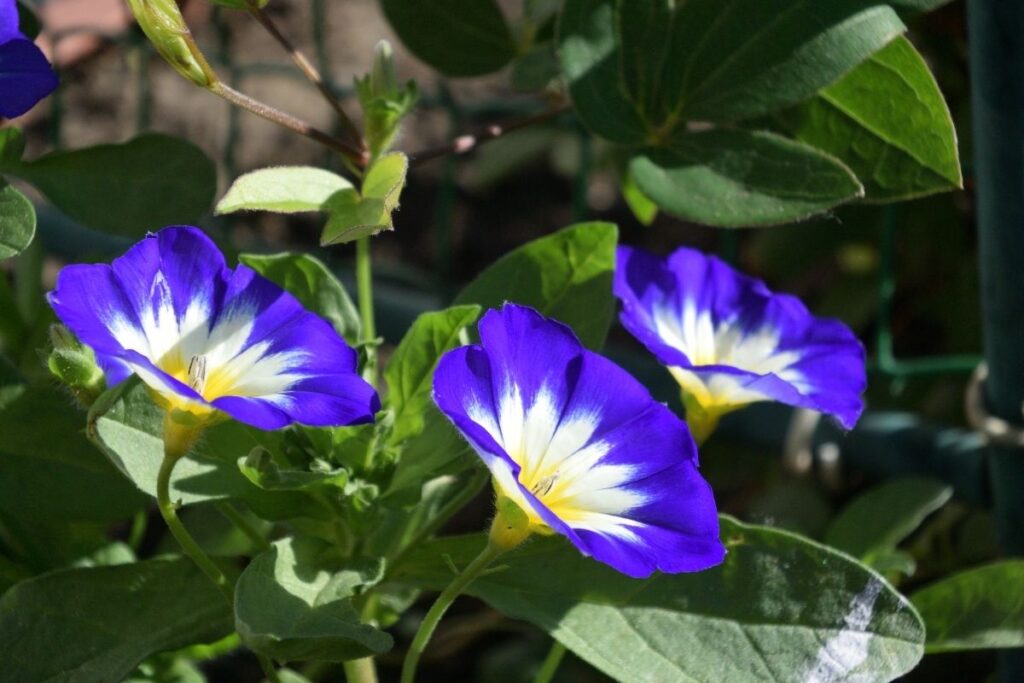
This plant produces fun blue petals with a starry design, vibrant pops of color sitting above pointed light green leaves. The blossoms sit atop brown stems, which elevates the flowers so that people can smell their fragrance.
22. Coleus
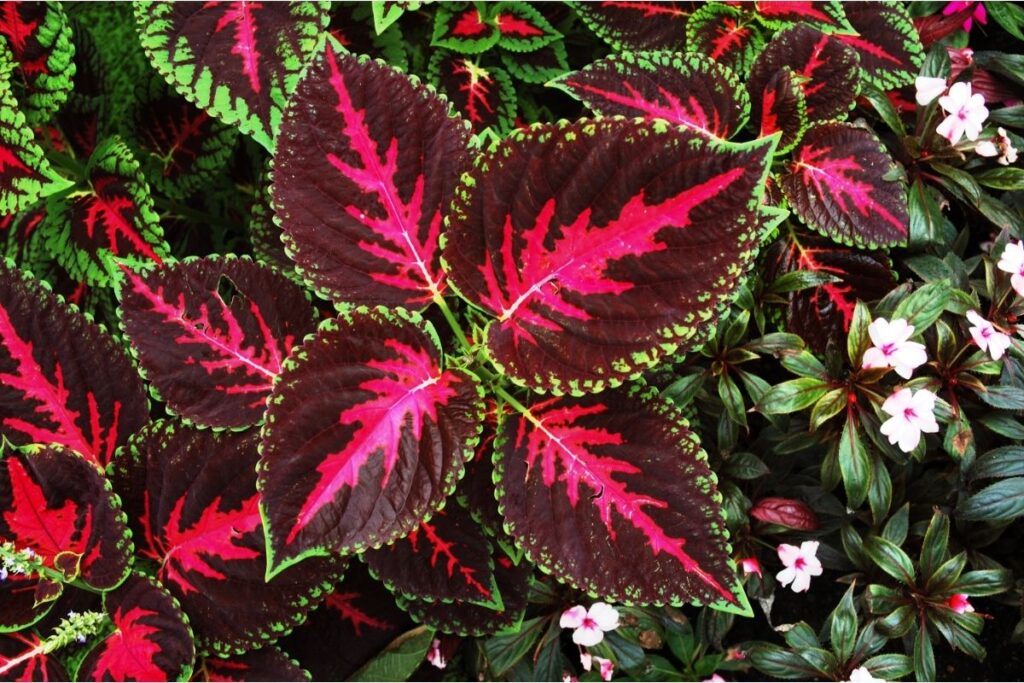
The coleus is perfect for pink-loving people because they have light and dark pink-colored leaves in romantic heart shapes. The vining shrub is typically scruffy, so it’s ideal for those that don’t like their plants to have a super-defined structure and want to cultivate a laid back vibe.
23. Hot Lips (Psychotria Elata)
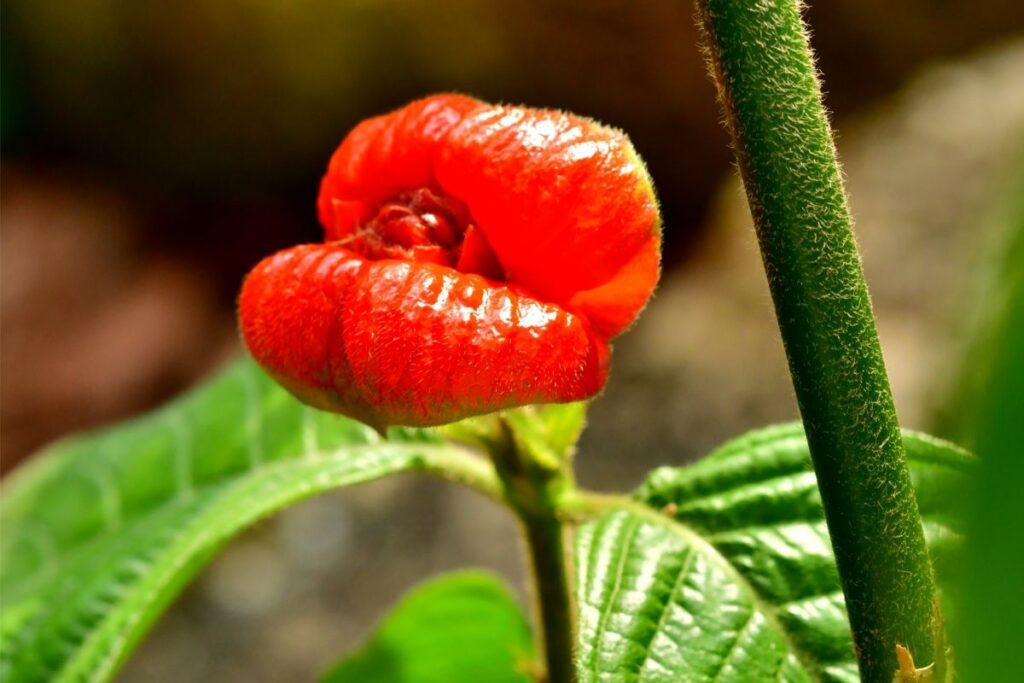
The Hot Lips (Psychotria elata) is appropriately named because it produces bright red mouth-shaped flowers, which bloom in tropical rainforest environments.
In the blossoms’ centers is a yellow part that attracts butterflies, hummingbirds, and other flying species, which is an excellent way to encourage pollination.
24. Achiote
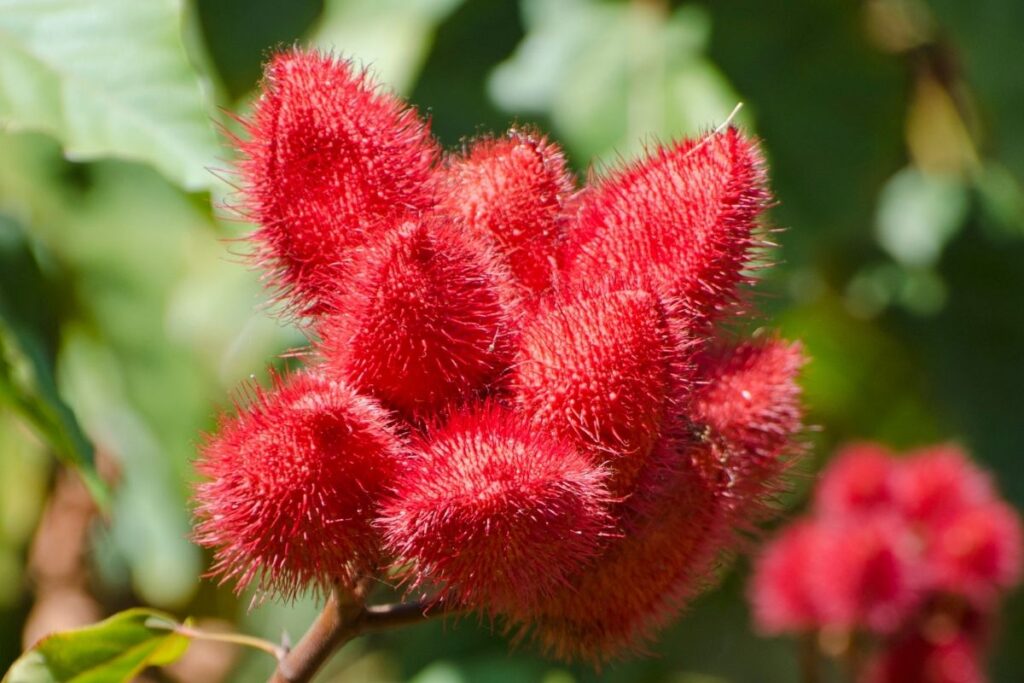
This Brazilian plant has soft red pods sprouting from dark brown stems, which hold seeds that can be used to create food dyes. Growing to approximately 8 meters tall, pink or white flowers blossom in between its textured green leaves.
25. Camu Camu Plant (Myciaria Dubia)
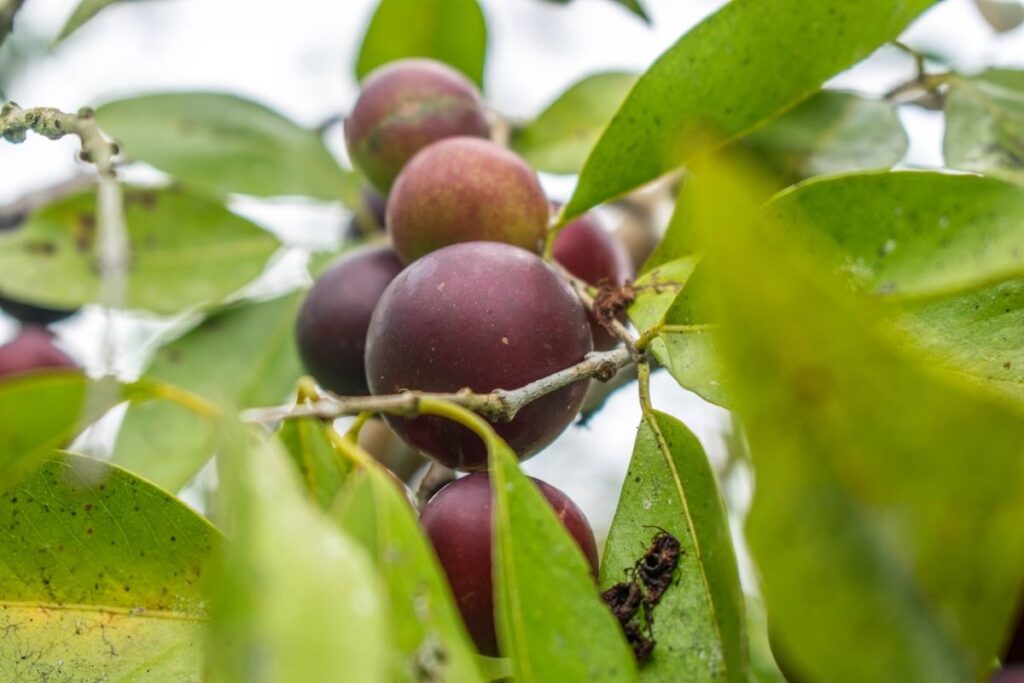
Producing a sharp-tasting fruit, the camu camu plant (Myrciaria dubia) is a little shrub, which grows spiky white flowers with light yellow centers. To enjoy the Vitamin C benefits that this flower offers, we recommend using the camu camu fruit in desserts to make juices and condiments.
26. Brazilian Blue Buttonbush, Pineapple Sangria
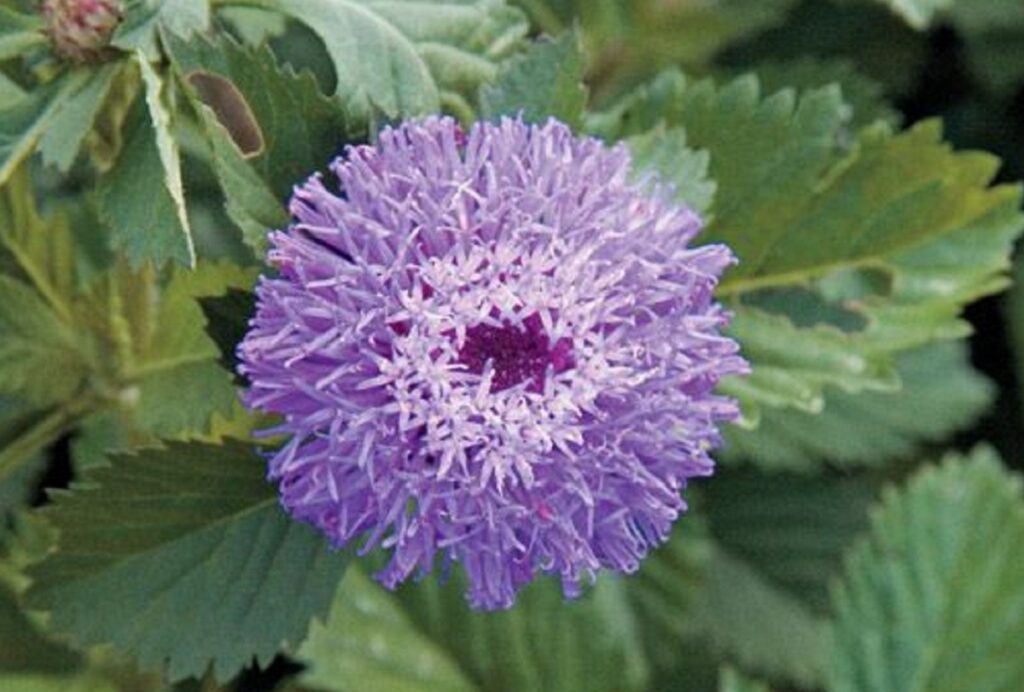
The Brazilian Blue Buttonbush Pineapple Sangria is a perennial that grows fluffy blue blossoms from Spring to Fall, adding a color pop to any suitable climate. This plant is super easy to grow and attracts many keen pollinators such as butterflies, birds, and insects!
Conclusion
Brazil is packed with vibrant blooms, vining plants, and lofty trees. When purchasing a plant from this beautiful country, we recommend checking how tall it will grow.
This is because you may not want to accidentally buy the wrong tree for yourself and find out over time that it grows as tall as mighty rainforest species.
If you’re not searching for a mammoth plant with a huge trunk, we advise going for a bit of shrub, wildflower, or small perennial. There are many fun ones on offer, happy gardening!
Editor’s Recommendations
28 Stunning Copper Flowers (Including Pictures)







